 As you know, there is no such thing as a unicorn. It is a mythical creature and the inspiration for this morning’s post about various fundraising policies and procedures documents that everyone says are important but rarely exists on the front line of many (especially smaller) social services non-profit agencies. I thought it might be a good idea to name these “unicorns” and explain what they are and why they’re important.
As you know, there is no such thing as a unicorn. It is a mythical creature and the inspiration for this morning’s post about various fundraising policies and procedures documents that everyone says are important but rarely exists on the front line of many (especially smaller) social services non-profit agencies. I thought it might be a good idea to name these “unicorns” and explain what they are and why they’re important.
Before I begin, I want to give a shout out to my BFF — Michael Johnson — who is a planned giving consultant at H. Freeman Associates. He is the real motivation for this morning’s post because he posted the following comment on one of my blogs from last week titled “Your agency’s fundraising program is like an iceberg“:
“Great post, Erik! This speech underscores the importance of having good gift acceptance policies and an operating plan in place to back up our brilliant marketing. We always need to “Begin with the end in mind” and ask ourselves what we will do when our marketing campaign is successful and the prospective donor responds. Otherwise our donors may become frustrated.”
It was Mike’s reference to Gift Acceptance Policies that got my mind whirling and thinking about today’s topic. THANKS, MIKE! 🙂
Gift Acceptance Policies
Sometimes donors like to support your mission with things other than cash. In fact, I just sat through a training a few months ago where my friend Mike talked about how donors give more “stuff” than they do “cash“.
It is for this reason that gift acceptance policies are important. They spell out in advance “what you do and how you do it” with regards to gifts of stuff. In a sample policy that I recently reviewed, an agency included policies and procedures for the following types of donated “stuff“:
- publicly traded securities
- securities that aren’t publicly traded
- real estate
- tangible personal property like art, jewelry, etc
- insurnace
- in-kind gifts and pro bono services
- deferred gifts (e.g. charitable gift annuities, irrevocable charitable remainder trusts, etc)
- revocable gifts like bequests
I refer to this policy and procedures document as a “non-profit unicorn” because I very rarely see it, and when I do it is typically larger non-profits (e.g. universities and hospitals) who have taken the time to develop them.
If you are interested in more info on gift acceptance policies, the National Council of Nonprofits has done a nice job uploading resources and samples to their site. However, please remember that policy making is a a responsibility of the board of directors. So, make sure to include them in the discussion and development of your agencies policies and procedures before asking the board to approve them.
Named Gifts Policy
Sometimes donors like to put their names on stuff, and a Named Gift Policy helps non-profit organizations with the following:
- identifying what can be and can’t be named (e.g. buildings, rooms, endowments, scholarships, events, etc)
- identifying the process and rules associated with naming something
- identifying the process and rules associated with unnaming something
Our friends at the Association of Fundraising Professionals have done a very nice job making the case for why this type of policy is important and providing a number of samples and links to resources. This online article is definitely worth the click!
Again, I consider this a “non-profit unicorn” because I can count on one hand how many times I’ve seen a policy like this.
Donor database policy and procedures manual
Many non-profit organizations have donor databases, and very few of them have put into writing things such as:
- how to input a pledge
- how to input a gift
- how to run solicitor reports
- protect donor privacy (g. what can be shared and with whom)
- how to enter donor’s names (g. Mr & Mrs, etc)
- what information to collect and where to put it
- how to track soft gifts
- how to enter a new donor
- how to track volunteers and prospects
The biggest reason this policy and procedures manual is critical is because your agency won’t always have the same person entering donor information into the database. With turnover comes inconsistency and lost institutional knowledge. Long story short . . . the lack of a policy and procedures manual for your donor database typically results in a G.I.G.O. situation (garbage in, garbage out).
Want to avoid the feeling of wanting to throw your database out the window? I suggest developing your policy and procedures manual.
I know that I sound like a broken record, but I’ve only seen a few of these in all my years of working with non-profit organizations, which is why it is a “unicorn” in my book.
Our friends at Metafile (ResultsPlus donor database) published an awesome nine page white paper that speaks to this issue. Click here to view their sample template.
Does your organization have one of these policies? If so, what was your motivation for creating it? What samples/templates did you use to get started? Are there other “unicorn documents” that you’ve heard about but never seen? Please use the comment box below to share your thoughts and experiences.
Here’s to your health!
Erik Anderson
Founder & President, The Healthy Non-Profit LLC
www.thehealthynonprofit.com
erik@thehealthynonprofit.com
http://twitter.com/#!/eanderson847
http://www.facebook.com/eanderson847
http://www.linkedin.com/in/erikanderson847

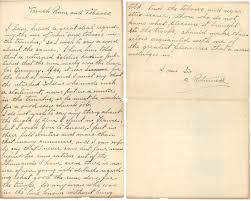 One of the many projects I’m currently working on involves cataloging a resource development toolbox for a client. The things I’m finding in that toolbox are amazing and include: samples,templates, whitepapers, training curricula, calculators, and even an online wizard to help with resource development planning. (Cool stuff!)
One of the many projects I’m currently working on involves cataloging a resource development toolbox for a client. The things I’m finding in that toolbox are amazing and include: samples,templates, whitepapers, training curricula, calculators, and even an online wizard to help with resource development planning. (Cool stuff!)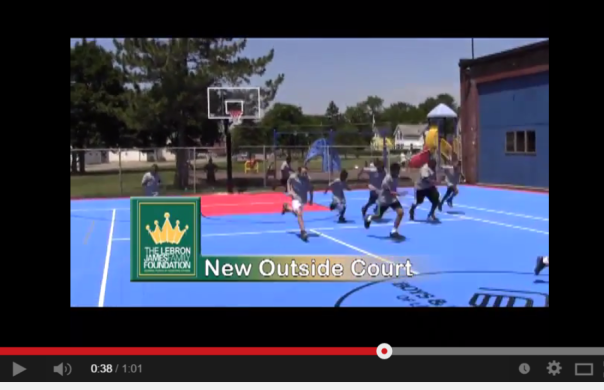
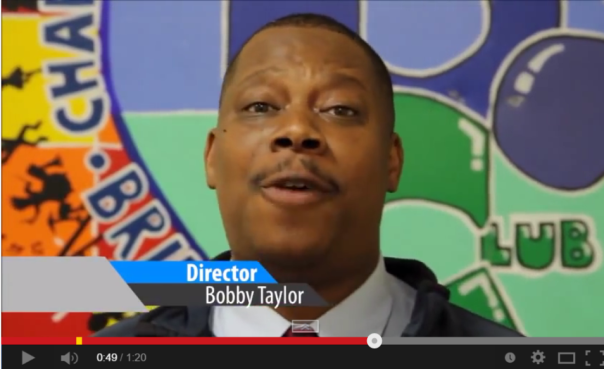
 I was on the phone with an old friend a few days ago, and our conversation turned to two naming opportunities with which he was struggling. One situation dealt with naming his agency’s golf outing after an aging volunteer who is the central organizing force behind the event. The other situation pertained to a planned giving prospect who is contemplating the possibility of leaving a very large legacy gift.
I was on the phone with an old friend a few days ago, and our conversation turned to two naming opportunities with which he was struggling. One situation dealt with naming his agency’s golf outing after an aging volunteer who is the central organizing force behind the event. The other situation pertained to a planned giving prospect who is contemplating the possibility of leaving a very large legacy gift. Finally, have you thought about the permanent nature of putting someone’s name on something and what happens when life throws your agency a curveball? If I’m being too cryptic at this time in the morning, I want you to think about what you would’ve done if you had accepted large donations with naming opportunities from either of these infamous gentlemen:
Finally, have you thought about the permanent nature of putting someone’s name on something and what happens when life throws your agency a curveball? If I’m being too cryptic at this time in the morning, I want you to think about what you would’ve done if you had accepted large donations with naming opportunities from either of these infamous gentlemen: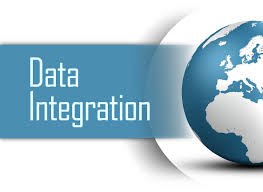 One of my many jobs in this world is being the webmaster and community manager for a large national organization’s resource development website, which essentially acts as a fundraising toolbox for their local affiliates. One of the many functions of the website is an “Ask the Expert” service where front line staff can ask resource development questions and receive an answer in approximately 24 hours. A few weeks ago a question was asked about donor databases and QuickBooks Online. While I’m happy with our answer, I’m wondering if there isn’t more advice that could’ve been provided.
One of my many jobs in this world is being the webmaster and community manager for a large national organization’s resource development website, which essentially acts as a fundraising toolbox for their local affiliates. One of the many functions of the website is an “Ask the Expert” service where front line staff can ask resource development questions and receive an answer in approximately 24 hours. A few weeks ago a question was asked about donor databases and QuickBooks Online. While I’m happy with our answer, I’m wondering if there isn’t more advice that could’ve been provided.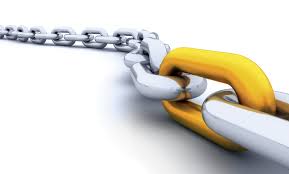 OK . . . you’ve had a chance to read the question and answer. What additional advice would you have provided? Do you use QuickBooks Online and a donor database with a data integration bridge? If so, what can you tell us about the data bridge and the database (or CRM)?
OK . . . you’ve had a chance to read the question and answer. What additional advice would you have provided? Do you use QuickBooks Online and a donor database with a data integration bridge? If so, what can you tell us about the data bridge and the database (or CRM)? There has been lots written throughout the years about the psychology of philanthropy. Most of the stuff I’ve read has been right on target with regards to why people open their wallets/purses and give money to a non-profit organization. I’ve been asked to revise a whitepaper titled “Why People Do and Don’t Give Money” for a national organization’s online fundraising toolbox to which their local affiliates have access. So, I thought I’d ask you and the rest of the DonorDreams blog community for a little help this morning. Would you please be so kind and give me one minute (or less) of your time at the end of this post?
There has been lots written throughout the years about the psychology of philanthropy. Most of the stuff I’ve read has been right on target with regards to why people open their wallets/purses and give money to a non-profit organization. I’ve been asked to revise a whitepaper titled “Why People Do and Don’t Give Money” for a national organization’s online fundraising toolbox to which their local affiliates have access. So, I thought I’d ask you and the rest of the DonorDreams blog community for a little help this morning. Would you please be so kind and give me one minute (or less) of your time at the end of this post? After spending a nice long Labor Day weekend in Michigan at a friend’s summer cottage on Saginaw Bay, I am now faced (as are you) with the long slide towards the end of the year. Not only can I not wear white clothing now that Labor Day has come and gone, but my fundraising friends should be starting to engage board, staff and fundraising volunteers in developing their agency’s written 2015 resource development plan.
After spending a nice long Labor Day weekend in Michigan at a friend’s summer cottage on Saginaw Bay, I am now faced (as are you) with the long slide towards the end of the year. Not only can I not wear white clothing now that Labor Day has come and gone, but my fundraising friends should be starting to engage board, staff and fundraising volunteers in developing their agency’s written 2015 resource development plan.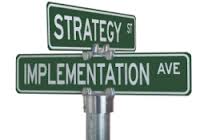 Having two degrees in planning, I tend to get overly excited about developing plans, and some of my past resource development plans have been 50 and 75 pages in length (Yeah, I have gotten carried away). Those plans included elements such as:
Having two degrees in planning, I tend to get overly excited about developing plans, and some of my past resource development plans have been 50 and 75 pages in length (Yeah, I have gotten carried away). Those plans included elements such as: Jeff Foxworthy has made a career out of answering a simple question: “You know you’re a redneck when . . .” This morning I thought I’d do something similar with: “You know you’re fundraising campaign has gone viral when . . .” by describing how last week unfolded for me as it relates to the
Jeff Foxworthy has made a career out of answering a simple question: “You know you’re a redneck when . . .” This morning I thought I’d do something similar with: “You know you’re fundraising campaign has gone viral when . . .” by describing how last week unfolded for me as it relates to the  Fellow blogger and fundraising genius — Jeff Brooks — publishes a blog post titled “
Fellow blogger and fundraising genius — Jeff Brooks — publishes a blog post titled “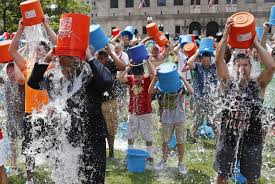 The day is winding down. The television is on, we’re into what will likely be the last show of the evening before going to bed, and my phone starts to blow-up. Needless to say, one of my former Boys & Girls Club of Elgin board presidents and good friend, Tim Williams, just completed the
The day is winding down. The television is on, we’re into what will likely be the last show of the evening before going to bed, and my phone starts to blow-up. Needless to say, one of my former Boys & Girls Club of Elgin board presidents and good friend, Tim Williams, just completed the  I have a confession to make. For years, one of the ideas I’ve shared with clients is that a postcard can be an effective stewardship strategy. The truth is that I’ve doubted the effectiveness of this strategy primarily because I had never seen it done well. Today, I’m able to say that I’ve seen the light and officially have become a believer thanks to my alma mater — University of Illinois (UIUC).
I have a confession to make. For years, one of the ideas I’ve shared with clients is that a postcard can be an effective stewardship strategy. The truth is that I’ve doubted the effectiveness of this strategy primarily because I had never seen it done well. Today, I’m able to say that I’ve seen the light and officially have become a believer thanks to my alma mater — University of Illinois (UIUC).

 Last week I was walking our dog, Betrys, when I came across a lemonade stand in my neighborhood. A mom was helping her two young sons set-up as I approached. It was in that moment that the 3-year-old boy learned a valuable lesson that every fundraising professional learns sooner or later in their career. So, I decided to take a minute to blog about it this morning.
Last week I was walking our dog, Betrys, when I came across a lemonade stand in my neighborhood. A mom was helping her two young sons set-up as I approached. It was in that moment that the 3-year-old boy learned a valuable lesson that every fundraising professional learns sooner or later in their career. So, I decided to take a minute to blog about it this morning. Our job as fundraisers is to understand the rules of engagement when it comes to fundraising:
Our job as fundraisers is to understand the rules of engagement when it comes to fundraising: